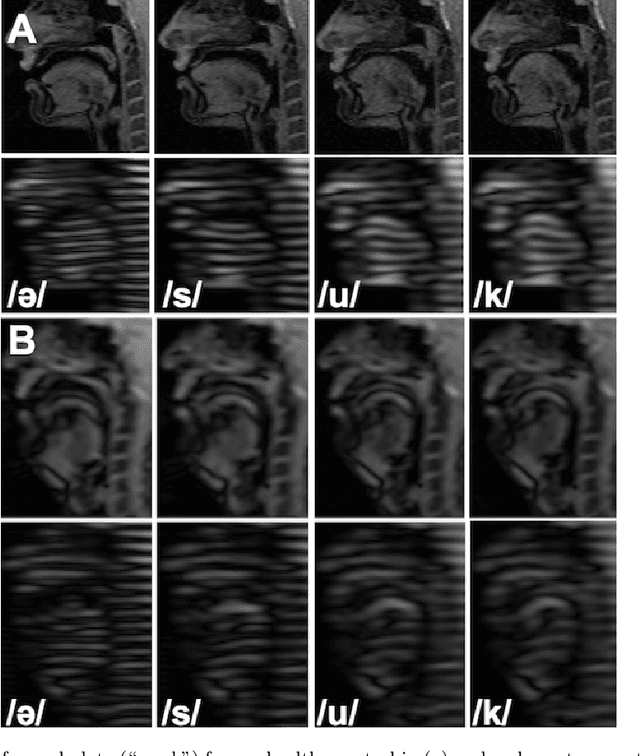Jordan Green
Speech Intelligibility Classifiers from 550k Disordered Speech Samples
Mar 15, 2023Abstract:We developed dysarthric speech intelligibility classifiers on 551,176 disordered speech samples contributed by a diverse set of 468 speakers, with a range of self-reported speaking disorders and rated for their overall intelligibility on a five-point scale. We trained three models following different deep learning approaches and evaluated them on ~94K utterances from 100 speakers. We further found the models to generalize well (without further training) on the TORGO database (100% accuracy), UASpeech (0.93 correlation), ALS-TDI PMP (0.81 AUC) datasets as well as on a dataset of realistic unprompted speech we gathered (106 dysarthric and 76 control speakers,~2300 samples).
Speech Map: A Statistical Multimodal Atlas of 4D Tongue Motion During Speech from Tagged and Cine MR Images
Sep 15, 2018



Abstract:Quantitative measurement of functional and anatomical traits of 4D tongue motion in the course of speech or other lingual behaviors remains a major challenge in scientific research and clinical applications. Here, we introduce a statistical multimodal atlas of 4D tongue motion using healthy subjects, which enables a combined quantitative characterization of tongue motion in a reference anatomical configuration. This atlas framework, termed Speech Map, combines cine- and tagged-MRI in order to provide both the anatomic reference and motion information during speech. Our approach involves a series of steps including (1) construction of a common reference anatomical configuration from cine-MRI, (2) motion estimation from tagged-MRI, (3) transformation of the motion estimations to the reference anatomical configuration, and (4) computation of motion quantities such as Lagrangian strain. Using this framework, the anatomic configuration of the tongue appears motionless, while the motion fields and associated strain measurements change over the time course of speech. In addition, to form a succinct representation of the high-dimensional and complex motion fields, principal component analysis is carried out to characterize the central tendencies and variations of motion fields of our speech tasks. Our proposed method provides a platform to quantitatively and objectively explain the differences and variability of tongue motion by illuminating internal motion and strain that have so far been intractable. The findings are used to understand how tongue function for speech is limited by abnormal internal motion and strain in glossectomy patients.
 Add to Chrome
Add to Chrome Add to Firefox
Add to Firefox Add to Edge
Add to Edge